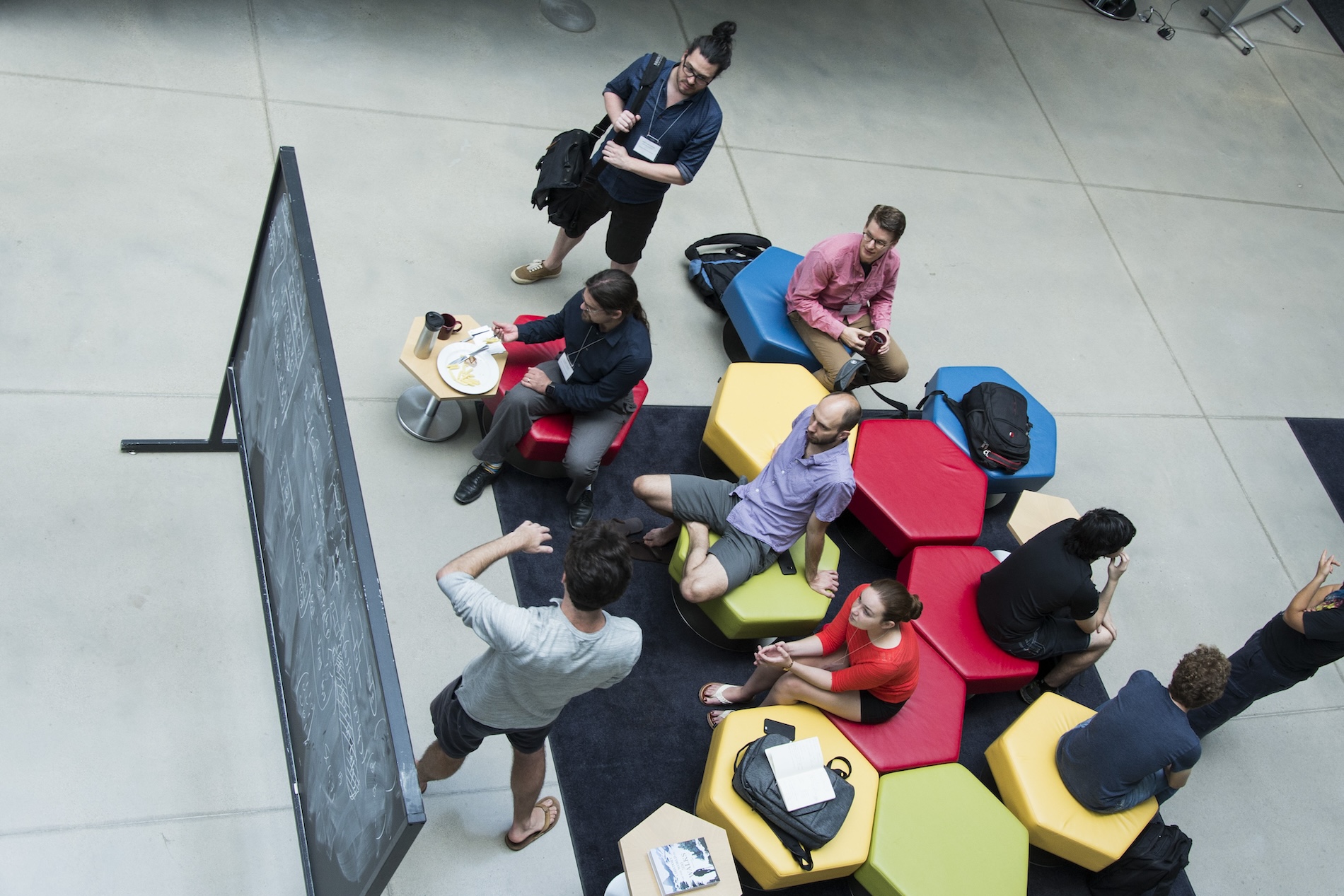Perimeter is home to one of the world’s largest communities of postdoctoral researchers in theoretical physics. Fully immersed in Perimeter’s multidisciplinary environment, these early-career scientists pursue independent research programs, tackling ambitious problems with mentorship from senior scientists. Most of our postdocs are appointed to three-year terms; in addition, Perimeter has prestigious named four-year fellowships, senior five-year fellowships, and jointly appointed fellowships with partner universities and research institutes.
Reed Essick, a postdoctoral researcher from August 2021 to September 2022, is now an assistant professor at the Canadian Institute for Theoretical Astrophysics.
Michael Vasmer, a postdoctoral researcher from October 2019 to September 2022, is now cross-appointed as a research scientist at Perimeter and as a senior quantum architecture scientist at Xanadu Quantum Technologies Inc.
Perimeter had a total of 76 postdocs from 27 countries this year.

PI People
Postdoctoral Researcher

Barbara Šoda, a postdoctoral researcher at Perimeter Institute, has seen her PhD work on superoscillations turned into a first proof of principle experiment by a team of researchers from Chapman University in California. A few years ago, when Šoda was a PhD student under the supervision of Achim Kempf, a Perimeter Affiliate and University of Waterloo professor, and Lucien Hardy, a Perimeter research faculty member, she developed new mathematical tricks for describing oscillating waveforms known as superoscillations. Their team developed new theoretical methods for overcoming the trade-off between wavelength and distance resolution, a problem that has long hampered more efficient technological applications. Šoda and Kempf’s colleagues at Chapman took up the challenge of developing new types of signals that improve the function of radar based on Šoda’s work. The Chapman research team used purpose-designed pulses to generate a new kind of superposed pulse. This potential improvement in radar resolution has possible applications in all kinds of technologies, from medical technology and mineral prospecting to detection of landmines. “The possibilities are virtually unlimited,” Kempf says. Šoda first came to Perimeter in 2016 as a Perimeter Scholars International (PSI) master’s student.
PI People
Postdoctoral Researcher

Marios Galanis, a postdoctoral researcher at Perimeter Institute, is part of a team that has developed a technique that could open up the vista of the night sky in a big way. It is called extended-path intensity correlation. Galanis worked with Masha Baryakhtar, a former Perimeter postdoctoral researcher who is now an assistant professor at the University of Washington; Ken Van Tilburg, a Visiting Fellow at Perimeter and assistant professor at New York University; and Neal Weiner, a professor at New York University. The team now has two preprint papers to introduce the technique to astronomers. Applications of their technique include detection of Earth-like planets around distant Sun-like stars, characterization of stellar binaries, mapping of the Milky Way matter density profile through stellar accelerations, and measurement of the spin of the SgrA* black hole at the centre of our galaxy, all at an unprecedented level of precision. The team is now working with astronomers to test out their new technique.